#Maya Abu al-Hayat
Explore tagged Tumblr posts
Text
Short Stories by 10 Palestinian Women, in English Translation
By ArabLit Staff The history of the Palestinian short story in Arabic is marked by many women writers, from the innovative works of mid-century authors like Samira Azzam (1927-1967); to, more than a generation later, Liana Badr; to the more recent innovations of form and language by Maya Abu al-Hayat, Adania Shibli, Sheikha Helawy, and many others. Because of how publishing currently works in…

View On WordPress
#Abeer Khshiboon#Adania Shibli#Asmaa Alghoul#Liana Badr#Maya Abu al-Hayat#Nayrouz Qarmout#Nibal Thawabteh#Samira Azzam#Sheikha Hussein Helawy#Suheir Abu Oksa Daoud
11 notes
·
View notes
Text
@halfwar-halfpeace
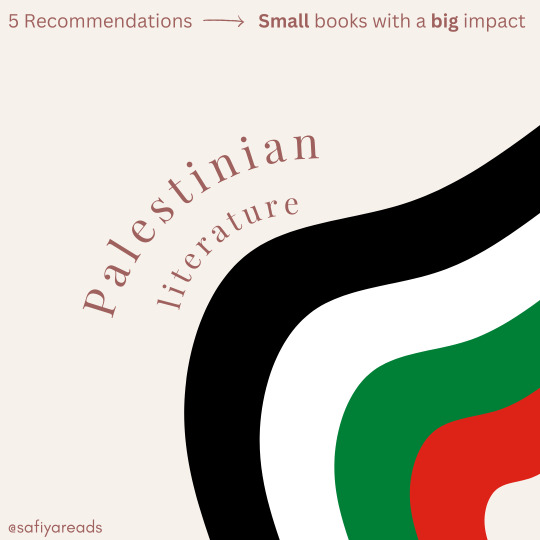
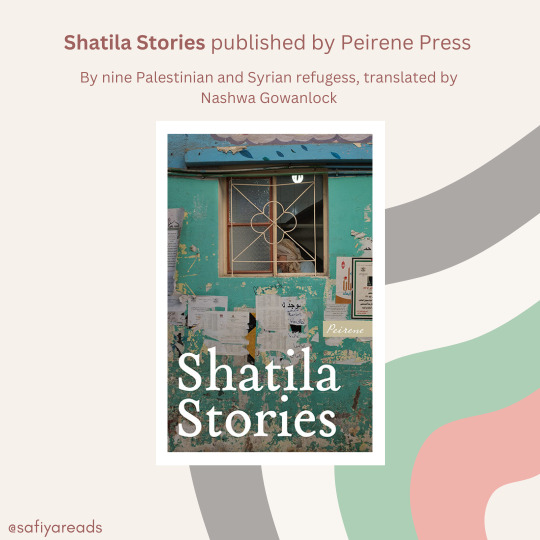
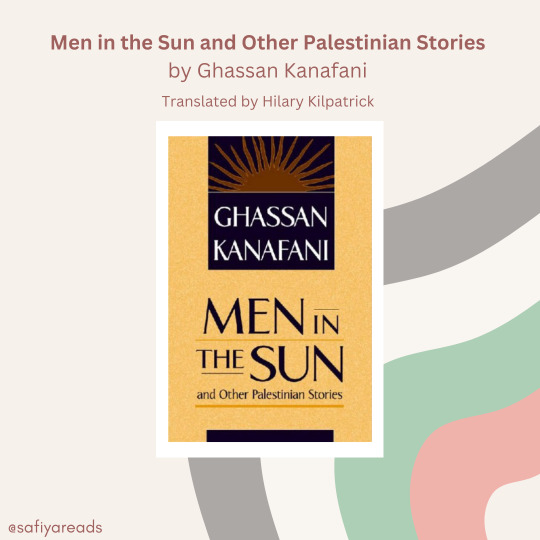

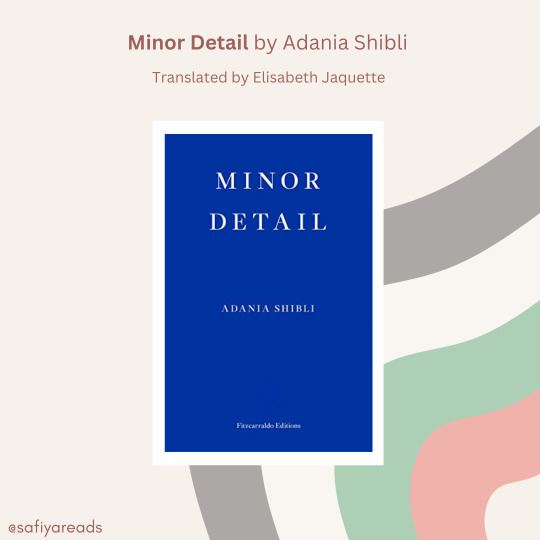

• Palestinian literature recommendations - small books with a big impact •
Here’s a few recommendations for short reads. If you’re looking for small books to help you reach your reading goal before the end of the year or for when you need a shorter read to suit your time, these are all fairly quick reads but very impactful.
All Palestinian literature. Most of these recommendations are short story collections and mostly translated from Arabic. They each show the different ways the Israeli occupation has affected Palestinians. From the start of the Nakba, to the blockaded Gaza Strip, to Palestinians refugees in the diaspora.
* Shatila Stories published by Peirene Press, nine contributors (Palestinian and Syrian): Omar Khaled Ahmad, Nibal AlAlow, Safa Khaled Algharbawi, Omar Abdellatif Alndaf, Rayan Mohamad Sukkar, Safiya Badran, Fatima Omar Ghazawi, Samih Mahmoud, Hiba Mareb. Translated by Nashwa Gowanlock
* Men in the Sun and Other Palestinian Stories by Ghassan Kanafani, translated by Hilary Kilpatrick
* The Sea Cloak and Other Stories by Nayrouz Qarmout, translated by Perween Richards
* Minor Detail by Adania Shibli, translated by Elisabeth Jaquette
* The Book of Ramallah edited by Maya Abu Al-Hayat, various translators
Have you read any of these? Are there others any you would add to the list or recommend me to read? The Book of Gaza is one I have on my radar that I want to read at some point.
🇵🇸🇵🇸🇵🇸
#books recommendations#palestine#omar khaled ahmad#nibal alalow#safa khaled algharbawi#amar abdellatif alndaf#rayan mohamad sukkar#safiya badran#fatima omar ghazawi#samih mahmoud#hiba marebh#ghassan kanafani#nayrouz qarmout#adania shibli#maya abu al-hayat
2K notes
·
View notes
Text

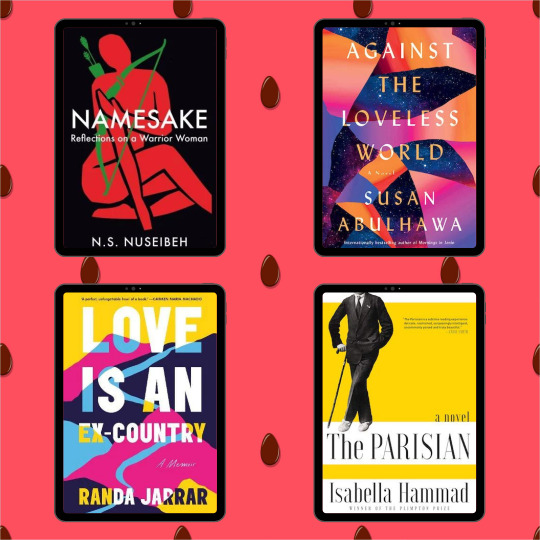
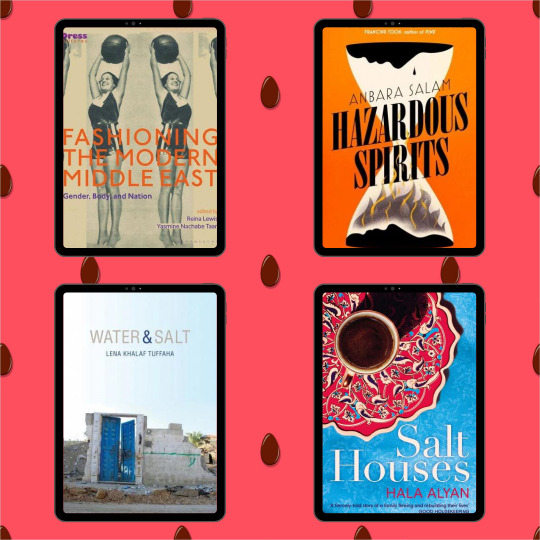

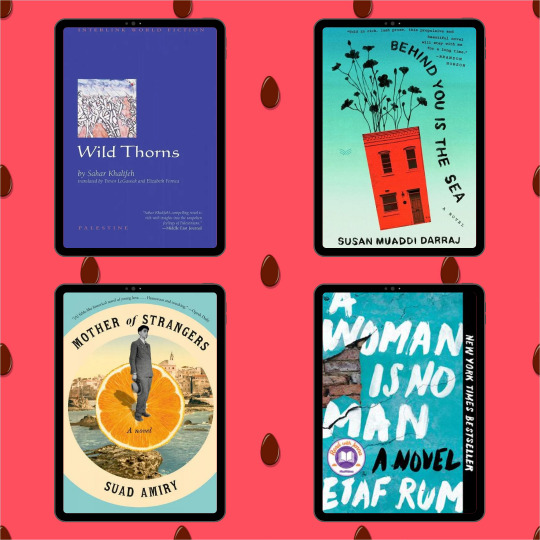


🍉 Women's Month: Books by Female Palestinian Authors 🍉
🍉 Celebrate Women's History Month by elevating and amplifying the voices of Palestinian women writers. Every book, whether it's fiction, non-fiction, or poetry, provides an opportunity for us to learn about the culture, history, and struggles of Palestinian people. Now more than ever, it's important that we support these narratives, shine a spotlight on these experiences, and stand in solidarity as Palestinians fight for liberation. Pay homage to these women, their identities, their ancestry, and ongoing resistance with these books!
🍉 Namesake: Reflections on A Warrior Woman - N.S. Nuseibeh 🍉 Against the Loveless World - Susan Abulhawa 🍉 Love is an Ex-Country - Randa Jarrar 🍉 The Parisian - Isabella Hammad
🍉 Fashioning the Modern Middle East: Gender, Body, and Nation - Reina Lewis and Yasmine Nachabe Taan 🍉 Hazardous Spirits - Anbara Salam 🍉 Water & Salt - Lena Khalaf Tuffaha 🍉 Salt Houses - Hala Alyan
🍉 You Exist Too Much - Zaina Arafat 🍉 Minor Detail - Adania Shibli 🍉 The Twenty-Ninth Year - Hala Alyan 🍉 We Are Not Here to Be Bystanders: A Memoir of Love and Resistance - Linda Sarsour
🍉 Wild Thorns - Sahar Khalifeh 🍉 Behind You Is The Sea - Susan Muaddi Dharaj 🍉 Mother of Strangers - Suad Amiry 🍉 A Woman is No Man - Etaf Rum
🍉 Enter Ghost by Isabella Hammad 🍉 They Fell Like Stars From the Sky & Other Stories - Sheikha Helawy 🍉 The Beauty of Your Face - Sahar Mustafah 🍉 Dear God. Dear Bones. Dear Yellow. - Noor Hindi
🍉 Mornings in Jenin - Susan Abulhawa 🍉 Balcony on the Moon: Coming of Age in Palestine - Ibtisam Barakat 🍉 My First and Only Love - Sahar Khalifeh 🍉 The Book of Ramallah - Maya Abu Al-Hayat
#palestinian books#save palestine#free palestine#womens history month#women writers#international women's day#palestine#batty about books#battyaboutbooks
130 notes
·
View notes
Text

Palestinian Writer, Maya Abu-Al Hayat.
#poetry#literature#words#classic literature#romantic academia#quotes#kaveh akbar#ocean vuong#palestine#free gaza#free palestine#palestinian literature#palestinian poetry#gaza#palestinians#decolonize
121 notes
·
View notes
Text
17 new books by Palestinian writers that are worth reading
Below includes a short list version, although you should still check out the article above. I also included places where you can borrow the books, in the event you are unable to purchase them. I put a star next to the ones I've personally read and can recommend.
Minor Detail by Adania Shibli
Exhausted on the Cross by Najwan Darwish
Rifqa by Mohammed El-Kurd
Palestine Is Throwing a Party and the Whole World Is Invited: Capital and State Building in the West Bank by Kareem Rabie
Against the Loveless World by Susan Abulhawa
My First and Only Love by Sahar Khalifeh
Among the Almond Trees by Hussein Barghouthi
⭐ Palestine: A Socialist Introduction edited by Sumaya Awad and Brian Bean (as of writing this, Haymarket Books is giving away the ebook version of this)
The Book of Ramallah edited by Maya Abu Al-Hayat
Ever Since I Did Not Die by Ramy al-Asheq
Stories Under Occupation: And Other Plays from Palestine edited by Samer al-Saber and Gary M. English
Power Born of Dreams: My Story is Palestine by Mohammad Sabaaneh
Farah Rocks by Susan Muaddi Darraj
Post-Millennial Palestine: Literature, Memory, Resistance edited by Ahmad Qabaha and Rachel Gregory Fox
The Dance of the Deep-Blue Scorpion by Akram Musallam
⭐ The Gaza Kitchen: A Palestinian Culinary Journey by Laila El-Haddad and Maggie Schmitt
Wondrous Journeys in Strange Lands by Sonia Nimr
0 notes
Text
Wir wissen, was passieren würde, wenn Israel eine Klinik eröffnet, um Palästinenser zu impfen. Weil das 2014 schon geschah.
Wir wissen, was passieren würde, wenn Israel eine Klinik eröffnet, um Palästinenser zu impfen. Weil das 2014 schon geschah.
Elder of Ziyon, Feb. 1, 2021 Im Guardian argumentiert Maya Abu Al-Hayat, Israel müsse alle Palästinenser impfen. “Israel hat in der Westbank alle Karten in der Hand, es sollte alle impfen” Ich twitterte eine…

View On WordPress
1 note
·
View note
Text
Israel holds all the cards in the West Bank – it should vaccinate everyone | Israel | The Guardian
Barbarian fucks
0 notes
Photo

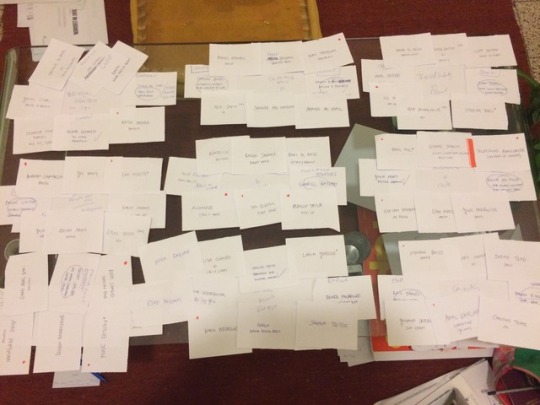
“A tale of trash mountains, garbage rivers and migratory birds” (2017)
Franziska Pierwoss and Sandra Teitge (Concept & Dramaturgy)
Duration: 2-3 hours
In the framework of the ongoing garbage crisis in Lebanon, a crisis that can be read as a potent symbol of the country’s often dysfunctional infrastructure and sectarian politics, Franziska Pierwoss and Sandra Teitge organize a dinner performance that addresses the multiple layers of this situation. Continuing the investigation into global structures of waste management that started in Mexico City in the spring of 2017 with a culinary evening that gathered key figures in the field at the MUAC (Museo Universitario Arte Contemporáneo), the dinner in Beirut equally invites audience members and experts on this matter to converse over a menu specifically conceived for the context. During this culinary and discursive evening, questions of private and public responsibility, informal and formal economies, as well as associated phenomena such as international waste trade and waste disposal will be raised and explored.
Through the practice of research-based culinary collaborations that may take the form of dinners, tastings or soup kitchens, Franziska Pierwoss and Sandra Teitge explore the nature of political or so-called historical moments and the potential of the culinary. Old or found menu cards are used as a starting point to investigate the atmosphere that might have influenced historical decisions and the context, in which food was used as a political agent. Assuming that politics do not only happen around the table in the private realm but also on an international level, Pierwoss and Teitge aim to renegotiate the nature of specific events and to debate food as a tool of power.
Sharjah Biennial 13, Tamawuj Upon a Shifting Plate and Act II October 14���22, 2017 www.sharjahart.org www.ashkalalwan.org
Beirut, Lebanon
Sharjah Art Foundation (SAF) announces the participants of Sharjah Biennial 13’s (SB13) concluding programme in Beirut, organised with Ashkal Alwan, including the off-site project Upon a Shifting Plate and Act II of the Biennial.
Upon a Shifting Plate October 14–15, 2017
With: Maya Abu Al-Hayat, Brigitte Caland, Tarek El-Ariss, Forager Collective, Monika Halkort, Candice Lin, Sahar Mandour, Iman Mersal, Lina Mounzer, Franziska Pierwoss and Sandra Teitge, SPURSE, and James T. Hong
Themed around the keyword "culinary," Upon a Shifting Plate is the Biennial’s fourth and final off-site project. Ashkal Alwan–the SB13 interlocutor of the culinary programme–presents a weekend of discursive and performative projects, where workshops, walks, talks, and cooking sessions will explore the production and consumption of culinary heritage, and how our eating habits condition and shape our psychological and cultural dispositions.
SB13 Act II Exhibitions opening: October 14, 2017 Public programme: October 16–22, 2017
With: Noor Abuarafeh*, Omar Abusaada, Leila Arab, Vartan Avakian, Pedro Barateiro and Quinn Latimer, Tamara Barrage*, Eric Baudelaire, Sabrina Belouaar, Mohamed Bourouissa*, Madison Bycroft, Los Carpinteros, Sara Sejin Chang (Sara van der Heide), Ali Cherri, Gaëlle Choisne, CJ Clarke, Céline Condorelli, Jesse Darling, Haitham Ennasr*, Rami Farook, Claire Fontaine*, Forensic Architecture, Khalil El Ghrib, Laura Henno, Sandi Hilal and Alessandro Petti, Ho Rui An, Eric van Hove, Iman Issa*, Emily Jacir*, Tushar Joag, Hiwa K, Christoph Keller*, Mohamed Khan, Dina Khouri*, Rayane M'cirdi, Randa Maroufi, Naeem Mohaiemen, Radouan Mriziga, Rabih Mroué and Lina Majdalanie, Dala Nasser, Wendelien van Oldenborgh, Christodoulos Panayiotou, Younes Rahmoun, Mostafa Saifi Rahmouni, Sigil*, Christopher Ian Smith, Praneet Soi, Rania Stephan*, SUPERFLEX, Rayyane Tabet, Akira Takayama*, Tamawuj.org, TAO Dance Theatre, Bahar Temiz and Felix Mathias Ott, Anton Vidokle, Karine Wehbé*, and Young-Hae Chang Heavy Industries
*Presenting new commissions
On October 14, Act II launches two exhibitions conceived by guest curators Hicham Khalidi and Reem Fadda at Beirut Art Center and Sursock Museum respectively.
In this final chapter of the Biennial, Reem Fadda’s exhibition Fruit of Sleep explores the notion of dormancy, looking at sleep as an act of neither the singular or collective mind, but rather of a social body carefully plotting action in the face of failed revolutionary attempts.
Hicham Khalidi’s exhibition An unpredictable expression of human potential seeks to address the current moment of disenfranchisement and frustration, pondering whether the young generation holds the vitality needed to upturn the socio-political legacies of modernity.
In addition, Act II features a public programme of talks, film screenings, and performances across the city, including new commissions and publications released throughout SB13 in Beirut, Dakar, Istanbul, Ramallah, and Sharjah.
The full programme will be released shortly on Sharjah Art Foundation and Ashkal Alwan’s websites.
Curated by Christine Tohme, Sharjah Biennial 13: Tamawuj unfolds in five parts, from October 2016 to October 2017. SB13 includes exhibitions and a public programme in two acts in Sharjah and Beirut; a year-long education programme in Sharjah; off-site projects in Dakar, Istanbul, Ramallah, and Beirut; and the online publishing platform, tamawuj.org.
Christine Tohme is the director of Ashkal Alwan, a nonprofit organisation established in Beirut in 1993 that supports contemporary artistic practice. She is the recipient of the Prince Claus Award (2006) and CCS Bard Audrey Irmas Award for Curatorial Excellence (2015).
Ashkal Alwan is a nonprofit organisation based in Beirut. Since 1993, the association has been committed to the production, facilitation, and circulation of creative and theoretical endeavors across a range of disciplines and media.
Sharjah Biennial is organised by Sharjah Art Foundation, which brings a broad range of contemporary art and cultural programmes to the communities of Sharjah, the UAE and the region. Since 1993, Sharjah Biennial has commissioned, produced, and presented large-scale public installations, performances, and films, offering artists from the region and beyond an internationally recognised platform for exhibition and experimentation.
3 notes
·
View notes
Text
Cadar; Trend atau Syariat?
Dari Aisyah radhiallahu’anha, ia berkata: “Sebuah kafilah lewat di hadapan kami. Kala itu kami sedang berada di sisi Rasulullah shallallahu’alaihi wasallam dalam keadaan berihram. Tatkala kafilah itu berada sejajar dengan kami, setiap wanita yang ada di antara kami menurunkan jilbab dari kepala untuk menutupi wajahnya. Setelah kafilah berlalu, kami pun membukanya kembali.”
Mendengar kata cadar khususnya di Indonesia barangkali bukan lagi hal baru khususnya beberapa tahun terakhir ini. Cadar atau biasa disebut dengan istilah niqob kini telah menempati ruang tersendiri di hati perempuan muslim. Faktanya, penutup wajah yang biasa hanya dilihat di negara Timur Tengah khususnya Arab Saudi ini juga bukan lagi hal baru bagi kalangan muslimah khususnya di Indonesia. Hal tersebut tentu sangat jauh berbeda dengan kondisi di era tahun 80-an ketika perempuan berjilbab masih belum mengalami peningkatan secara kuantitas , juga belum meratanya penerimaan masyarakat secara umum terhadap eksistensi perempuan berjilbab baik di sektor akademisi pendidikan, pemerintahan dan militer. Dan bahkan hingga kini pula masih banyak yang memandang streotip terhadap perempuan berhijab yang disertai penutup wajah alias cadar. Meskipun demikian justru di masa-masa itulah muslimah Indonesia tetap eksis berjuang menegakkan prinsipnya untuk berhijab.
Lalu kini hingga berjalannya waktu dan betapa perjuangan orang-orang terdahulu para muslimah agar mempopulerkan syariat berhijab telah hampir sepenuhnya diterima baik di kalangan masyarakat kota maupun dipelosok desa, tak terkecuali pula dengan penutup wajah (cadar) yang akhirnya kini telah menjadi pilihan pada banyak muslimah Indonesia. Faktanya, melihat bagaimana eksistensi wanita bercadar baik secara nyata maupun maya di sosial media yang semakin menjamur ini membuktikan bahwa cadar atau niqob bahkan telah menjadi satu diantara arus fashion hijab yang semakin banyak digemari. Perspektif yang menarik tentang ciri khas cadar yang unik dan istimewa akhirnya menjadi trend tersendiri dalam mode berbusana yang seutuhhnya berlabel syar’i ini. Eksistensi para niqobers, panggilan para pengguna cadar dengan berbagai model dan bahan ini hakekatnya hampir sama persis dengan fenomena hijab syar’i.
Realitanya justru semakin banyak muslimah yang kini menunjukkan identitas kemuslimahannya lengkap dengan cadarnya secara terang-terangan. Di beberapa akun bisnis online misalnya, cadar atau niqob dijadikan pilihan usaha yang tepat juga para customers apalagi dengan stylenya beragam yang kemudian dipraktekkan cara pakainya dibeberapa pemilik akun dengan objek muslimah bercadar diberbagai dimensi kehidupan, semisal di pusat perbelanjaan,restaurant, café, dan diberbagai tempat lainnya juga tidak ketinggalan disertai dengan pose selfie. Muslimah bercadar diakui telah menjadi satu dari sekian komunitas yang banyak menyimpan kekaguman dan rasa penasaran pada sosok-sosoknya mungkin karena sebagaimana yang terlihat perempuan bercadar tidak menampakkan wajahnya kecuali kedua matanya.
Lantas bagaimana Islam memandang muslimah bercadar yang hari ini semakin meningkat jumlahnya? Didalam Alqur’an disebutkan lebih dari satu kali tentang perintah bagi perempuan beriman agar menutup seluruh tubuhnya hingga ke dada dan dengan kain panjang, baik di surah Annur atau Al Ahzab. Adapun cadar ,secara langsung tidak ada satu pun redaksi kalimat dari terjemahan Alqur’an yang menyebutkan tentang bercadar. Sebab para ulama berbeda pendapat tentang hal tersebut. Meskipun demikian, bukan berarti memakai cadar sebagaimana konsepsi-konsepsi sebagian orang yang menyatakan cadar sebagai tradis bangsa Arab tersebut patut dibenarkan, ini keliru, karena setiap syariat yang diperintahkan bukan hanya ditujukan pada konteks masyarakat dimana ayat-ayat tersebut turun (bangsa Arab) , akan tetapi universalitas syariat itulah yang harus dibenarkan dimana dan kapanpun tetap berlaku. Termasuk bercadar. Kekuatan ayat-ayat Ilahi yang disertai dengan penjelasan dari riwayat hadist-hadist Nabi serta atsar (jejak) para generasi setelahnya (Salafus Shaleh) merupakan sebuah kesatuan yang utuh tentang bagaimana kita memahami sebuah syariat. Oleh karena itu, beberapa argumentasi ilmiah berdasarkan pada hadist dan perkataan Sahabat Nabi berikut ini dapat menjadi pondasi dasar bagi kita untuk memahami bagaimana konsep cadar dalam Islam.
Perlu diketahui banyak dari kalangan syaikh (ulama) pada zaman sekarang yang berpendapat bahwa wajah wanita merupakan aurat yang tidak boleh dibuka. Bahkan, para ulama itu mengharamkan mereka untuk membuka (memperlihatkan)nya. Sebaliknya, sekelompok ulama yang lain menyatakan bahwa menutup wajah merupakan perbuatan bid’ah dan termasuk sikap berlebihan-lebihan dalam beragama. Yang perlu diketahui bahwa menutup wajah dan dua telapak tangan adalah perbuatan yang memiliki dasar di dalam as-Sunnah. Perbuatan ini sudah dikenal dan dipraktikkan pada masa Nabi shallallahu’alaihi wasallam sebagaimana yang diisyaratkan dalam sabda beliau ‘Wanita yang sedang berihram tidak boleh mengenakan niqab (cadar) dan quffaz (kaus tangan).” Syaikh Islam Ibnu Taimiyah dalam tafsir surah An-Nuur berkata : “Hadist ini menunjukkan bahwa cadar dan kaus tangan merupakan dua benda yang telah populer di kalangan wanita yang tidak berihram. Kedua benda ini menunjukkan pada kita bahwa kaum wanita boleh menutup wajah dan kedua tangan mereka.”
Kemudian dalam penjelasan lainnya disebutkan bahwa istri Rasulullah Aisyah radhiallahu’anha, ia pernah berkata: “Sebuah kafilah lewat di hadapan kami. Kala itu kami sedang berada di sisi Rasulullah shallallahu’alaihi wasallam dalam keadaan berihram. Tatkala kafilah itu berada sejajar dengan kami, setiap wanita yang ada di antara kami menurunkan jilbab dari kepala untuk menutupi wajahnya. Setelah kafilah berlalu, kami pun membukanya kembali.” Juga riwayat dari Asma binti Abu Bakar radhiallahu’anha, ia berkata: “Dahulu, kami biasa menutup wajah kami dari pandangan laki-laki. Juga Hafshah binti Sirin rahimahullah salah seorang generasi tabi’iyah yang disebutkan perihalnya ia memakai cadar. (Syaikh Nashiruddin Al-Albani dalam Kriteria Busana Muslimah: 2010).
Sesungguhnya masih banyak riwayat yang dapat dipetik pelajarannya terkait bagaimana cadar itu sendiri bagi seorang muslimah. Akan tetapi beberapa contoh diatas setidaknya dapat membuka cakrawala berpikir kita yang semakin luas dan pemahaman yang mendalam tentang penutup wajah (cadar). Jika perempuan-perempuan bercadar terdahulu yang disebut didalam hadist merasa malu hingga menutup wajahnya dari tatapan para lelaki, itu berarti terjawab sudahlah apa yang kini terjadi pada segelintir muslimah bercadar yang barangkali harus ‘merelakan diri’ untuk tidak mempublikasikan eksistensi ‘perwajahan fisik ’ dibalik cadar atau penutup wajah setidaknya di media sosial dimana arusnya semakin kencang dan penggunanya yang multi persepsi. Cadar sebagai trend di satu sisi mampu mengalirkan energi positif bagi banyak muslimah untuk berlomba-lomba menyempurnakan pakaian kemuslimahannya, sebuah sikap terpuji wanita yang menghormati dirinya. Akan tetapi di sisi lain juga bisa menjadi bomerang setidaknya pada diri pemakainnya, ketika trend cadar telah usai bisa jadi berimbas pada lunturnya semangat untuk tetap eksis bercadar. Itulah mengapa ‘cadar’ harus dipandang sebagai “the real choice” sebagai syariat yang dipilih dari hati serta berasal dari pemahaman yang lurus dan benar.Sehingga apapun kondisinya, cadar tetap menjadi pilihan sejati sampai akhir hayat. Wallahu a’lam.
0 notes
Text
✨ National Arab American Heritage Month (NAAHM) is celebrated in April. The first Arab American Heritage Day was celebrated on October 25, 1992. NAAHM celebrates the heritage and culture of Arab Americans and Arabic-speaking Americans. It also recognizes the contributions of Arab Americans to the United States, including:
🌙 The history of Arab migration to America 🌙 The diversity within the Arab American community 🌙 Important customs and traditions 🌙 The fight for civil rights and social justice
✨ NAAHM also serves as a time to: 🌙 Combat Anti-Arab bigotry 🌙 Challenge stereotypes and prejudices
✨ In 2023, the president declared April National Arab American Heritage Month. However, I felt it necessary to recognize Arab American Heritage Day this year, too. I'm Palestinian 🇵🇸, but growing up, I never saw that word printed on a page, never saw it recognized as a nationality in novels or newspapers. We're here. We exist. We will not be erased, ignored, or silenced.
✨ In celebration of these voices, here are a few books by Arab and 🇵🇸Palestinian authors to consider adding to your TBR.
🌙 A Woman is No Man by Etaf Rum 🌙 Against the Loveless World by Susan Abulhawa 🌙 The Woman From Tantoura by Radwa Ashour 🌙 You Exist Too Much by Zaina Arafat 🌙 Crescent by Diana Abu Jaber 🌙 Salt Houses by Hala Alyan 🌙 Minor Detail by Adania Shibli 🌙 As Long as the Lemon Trees Grow by Zoulfa Katouh 🌙 Woman at Point Zero by Nawal El Saadawi 🌙 Silence is a Sense by Layla AlAmmar 🌙 The Beauty of Your Face by Sahar Mustafah 🌙 Exhausted on the Cross by Najwan Darwish 🌙 Palestine Is Throwing a Party and the Whole World Is Invited by Kareem Rabie 🌙 My First and Only Love by Sahar Khalifeh 🌙 Rifqa by Mohammed El-Kurd 🌙 Among the Almond Trees by Hussein Barghouthi 🌙 Palestine: A Socialist Introduction (edited) by Sumaya Awad and Brian Bean 🌙 The Book of Ramallah (edited) by Maya Abu Al-Hayat 🌙 Stories Under Occupation: And Other Plays from Palestine (edited) by Samer al-Saber and Gary M. English 🌙 Ever Since I Did Not Die by Ramy al-Asheq 🌙 Power Born of Dreams: My Story is Palestine by Mohammad Sabaaneh 🌙 Post-Millennial Palestine: Literature, Memory, Resistance (edited) by Ahmad Qabaha and Rachel Gregory Fox 🌙 The Dance of the Deep-Blue Scorpion by Akram Musallam 🌙 Wondrous Journeys in Strange Lands by Sonia Nimr 🌙 The Gaza Kitchen: A Palestinian Culinary Journey by Laila El-Haddad and Maggie Schmitt 🌙 Evil Eye by Etaf Rum 🌙 A Child in Palestine by Naji al-Ali 🌙 Murals by Mahmoud Darwish 🌙 Farah Rocks by Susan Muaddi Darraj 🌙 Halal Hot Dogs by Suzannah Aziz, illustrated by Parwinder Singh 🌙 Baba, What Does My Name Mean? A Journey to Palestine by Rifk Ebeid, illustrated by Lamaa Jawhari 🌙 The Olive Tree Said to Me by N. Salem 🌙 Does My Head Look Big In This? by Randa Abdel-Fattah 🌙 Don't Read The Comments by Eric Smith 🌙 Jasmine Falling by Shereen Malherbe 🌙 Mornings in Jenin by Susan Abulhawa 🌙 The Lady of Tel Aviv by Raba’i al-Madhoun 🌙 Looking for Palestine: Growing Up Confused in an Arab-American Family by Najla Said
#palestine#free palestine#arab american heritage month#muslim writers#arab writers#palestinians#books#book recs#book recommendation#book list#reading#book blog#batty about books#battyaboutbooks
38 notes
·
View notes
Text
Friday Finds: 'A Contemporary Novel' by Maya Abu al-Hayat & Five More
Friday Finds: ‘A Contemporary Novel’ by Maya Abu al-Hayat & Five More
Translator Fady Joudah has added his Englishing of Maya Abu al-Hayat’s “A Contemporary Novel” to his series of “Poems from Palestine” for The Baffler: The poem, set to appear in the sardonic, insightful, unafraid collection You Can Be the Last Leaf next year, is one of the rare poems that comment on the novel (while many novels seem to comment on poetry). It tells us that, in the contemporary…

View On WordPress
2 notes
·
View notes
Text






• Palestinian literature recommendations - small books with a big impact •
Here’s a few recommendations for short reads. If you’re looking for small books to help you reach your reading goal before the end of the year or for when you need a shorter read to suit your time, these are all fairly quick reads but very impactful.
All Palestinian literature. Most of these recommendations are short story collections and mostly translated from Arabic. They each show the different ways the Israeli occupation has affected Palestinians. From the start of the Nakba, to the blockaded Gaza Strip, to Palestinians refugees in the diaspora.
* Shatila Stories published by Peirene Press, nine contributors (Palestinian and Syrian): Omar Khaled Ahmad, Nibal AlAlow, Safa Khaled Algharbawi, Omar Abdellatif Alndaf, Rayan Mohamad Sukkar, Safiya Badran, Fatima Omar Ghazawi, Samih Mahmoud, Hiba Mareb. Translated by Nashwa Gowanlock
* Men in the Sun and Other Palestinian Stories by Ghassan Kanafani, translated by Hilary Kilpatrick
* The Sea Cloak and Other Stories by Nayrouz Qarmout, translated by Perween Richards
* Minor Detail by Adania Shibli, translated by Elisabeth Jaquette
* The Book of Ramallah edited by Maya Abu Al-Hayat, various translators
Have you read any of these? Are there others any you would add to the list or recommend me to read? The Book of Gaza is one I have on my radar that I want to read at some point.
🇵🇸🇵🇸🇵🇸
#palestine#palestinian literature#book recommendations#bookblr#bookworm#bookish#ghassan kanafani#translated literature#short stories#short fiction#Arab literature#book list
2K notes
·
View notes